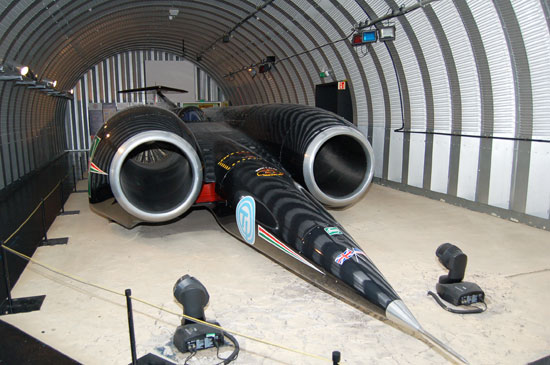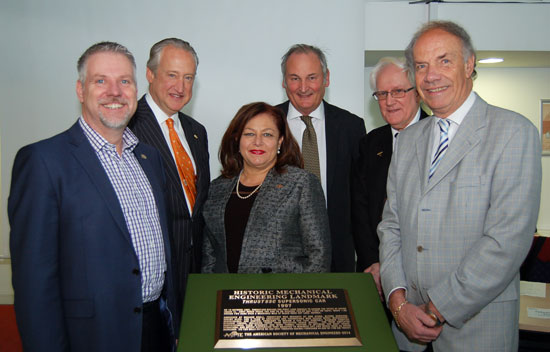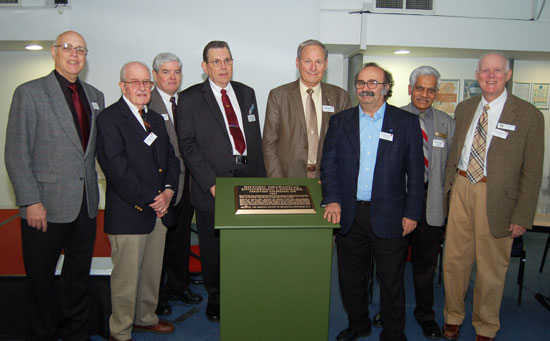Supersonic Car Added to ASME's Landmark Roster
Supersonic Car Added to ASME's Landmark Roster

The ThrustSSC Supersonic Car, the first car to officially break the sound barrier, was designated ASME’s 256th Historic Mechanical Engineering Landmark at a ceremony in Coventry, England, on March 15.
More than 90 people attended the event, which took place at the Coventry Transport Museum. Representatives from ASME included ASME President Madiha El Mehelmy Kotb, Executive Director Thomas Loughlin, and members of the Society’s History and Heritage Committee and United Kingdom Section.
ASME’s landmark designation recognizes the jet-powered Thrust SSC for its historic achievement during the Land Speed Record competition, in which four-wheeled vehicles aim to achieve the highest possible speed over a mile- or kilometer-long course. On Oct. 15, 1997, the Thrust SSC became the first land vehicle to surpass the speed of sound, or Mach 1, when Royal Air Force fighter pilot Andy Green raced the car to an average speed of 763.04 miles per hour over two mile-long runs at Black Rock Lake in Nevada, breaking the previous Land Speed Record by 30 mph.

The vehicle, which is propelled by two Rolls-Royce turbofan engines, was conceived by Richard Noble and designed by a team of British engineers and technicians led by Ron Ayers, Glynne Bowsher and Jeremy Bliss. Employing computational fluid dynamics programs and wind tunnel testing in designing the car, the team “solved novel mechanical, aerodynamic, and control problems to design a car that properly managed complex dynamic forces, including those from reflected shock waves,” according to the plaque presented by ASME during the ceremony.

Addressing the audience during the presentation of the landmark plaque, ASME President Kotb emphasized the value of highlighting engineering innovations, such as the Thrust SSC. “I’m sure you will all agree that landmark programs are an important reminder of the history and heritage of engineering and play an important role in promoting a greater public understanding of engineering and its place in human civilization,” she said. “By joining with fellow engineers, such as yourselves, and our partner societies and all of you here today in recognizing the place that the Thrust SSC Supersonic Car has in engineering history, we’re reminded of how human ingenuity and the will to advance knowledge and innovation can impact the speed, evolution and design of modern machines, while accelerating the progress and inspiration of modern industry and technology.”
For more information on the ASME Historic Engineering Landmarks program, or to learn more about the other 255 landmarks designated by ASME, visit the Landmarks page on ASME.org.



